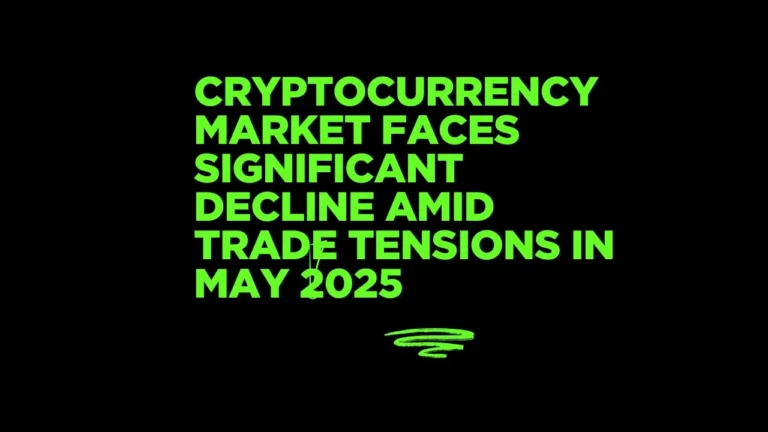Bitcoin Surpasses $111,000 A New Milestone in the Crypto Revolution
Introduction: Bitcoin’s Meteoric Rise
Imagine waking up to news that Bitcoin, the decentralized digital currency that started as an obscure experiment, has just crossed $111,000. For crypto enthusiasts, investors, and even skeptics, this moment feels like a turning point. On May 22, 2025, Bitcoin hit a record high of nearly $112,000, a remarkable rebound from its April low of $75,000, as reported by CoinDesk. This surge represents a 20% year-to-date gain, solidifying Bitcoin’s position as a financial juggernaut. But what’s fueling this rally, and why does it matter? Let’s break it down.
What’s Driving Bitcoin’s Surge Past $111,000?
1. Institutional Adoption and ETF Inflows
One of the biggest catalysts behind Bitcoin’s climb is the unprecedented institutional interest. Bitcoin Exchange-Traded Funds (ETFs) have been a game-changer, with spot Bitcoin ETFs recording $785 million in inflows in the week leading up to May 19, 2025, contributing to a staggering $7.5 billion in year-to-date inflows, according to Bloomberg. These ETFs make it easier for traditional investors to gain exposure to Bitcoin without directly holding the asset, bridging the gap between Wall Street and the crypto world.
Take H100 Group, a Swedish healthcare firm, for example. On May 20, 2025, H100 announced it had purchased 4.39 BTC, becoming the first publicly listed company in Sweden to adopt Bitcoin as a treasury asset, as noted by Bitcoin Magazine. This move mirrors similar strategies by companies like MicroStrategy, which have bolstered market confidence in Bitcoin as a store of value.
2. Pro-Crypto Policies Under the Trump Administration
The political landscape is also playing a pivotal role. The re-election of Donald Trump has ushered in a wave of optimism for crypto investors, with the administration signaling a pro-crypto stance. Reports from Reuters highlight plans for a White House Crypto Summit and discussions around stablecoin legislation, such as an amendment to the GENIUS Act to regulate presidential involvement in stablecoins. These developments suggest a regulatory environment that could foster Bitcoin’s growth, encouraging both retail and institutional participation.
Moreover, states like Michigan are stepping up. On May 21, 2025, Michigan introduced four crypto-related bills covering mining, tax deductions, and state treasury investments in Bitcoin and Ethereum, as covered by CoinTelegraph. These legislative moves signal a broader acceptance of cryptocurrencies at the state level, further boosting market sentiment.
3. Bitcoin’s Four-Year Cycle and Post-Halving Momentum
Bitcoin’s price movements have historically followed a four-year cycle tied to its halving events, which reduce the rate at which new Bitcoins are created, thereby increasing scarcity. The most recent halving occurred in April 2024, and we’re now in the fourth year of the cycle, a period often associated with significant price rallies, as explained by Forbes. Analysts point to this cycle as a key driver of Bitcoin’s current surge, with price targets for 2025 ranging from $135,000 to as high as $320,000, according to CNBC.
4. Macroeconomic Factors and Market Sentiment
Global economic conditions are also at play. With inflation concerns lingering and traditional markets facing uncertainty, Bitcoin is increasingly viewed as a hedge against fiat currency devaluation. The “digital gold” narrative is gaining traction, especially as central banks navigate monetary policy challenges. Posts on X reflect this sentiment, with users like @CryptoAnalyst21 noting, “Bitcoin’s breaking $111K because it’s the only asset that can’t be manipulated by central banks.” While X posts aren’t authoritative, they capture the growing public perception of Bitcoin as a safe haven.
The Numbers Behind the Milestone
To put Bitcoin’s $111,000 milestone in perspective, let’s look at some key metrics:
Market Cap: Bitcoin’s market capitalization now exceeds $2.2 trillion, rivaling some of the world’s largest companies, per CoinMarketCap.
Trading Volume: Daily trading volumes have spiked, with over $50 billion traded on major exchanges like Binance and Coinbase on May 22, 2025.
On-Chain Activity: Despite the bullish price action, on-chain metrics like the weekly Relative Strength Index (RSI) show bearish divergence, hinting at potential short-term consolidation, as noted by CryptoSlate.
These numbers underscore Bitcoin’s growing dominance in the financial world, but they also highlight the need for caution as technical indicators suggest a possible pullback.
Implications for Investors and the Market
For Retail Investors
For everyday investors, Bitcoin’s surge past $111,000 is both exciting and daunting. The rally offers opportunities for profit but also underscores the importance of risk management. Here are some tips:
Diversify: Don’t put all your eggs in one crypto basket. Consider allocating only a small portion of your portfolio to Bitcoin.
Stay Informed: Follow reputable sources like CoinDesk, Bloomberg, and CoinTelegraph for market updates.
Use Secure Platforms: Trade on trusted exchanges and store your Bitcoin in secure wallets, preferably hardware wallets like Ledger or Trezor.
For Institutional Investors
For institutions, Bitcoin’s milestone reinforces its legitimacy as an asset class. The success of Bitcoin ETFs and corporate adoptions like H100 Group’s suggest that more firms may follow suit, potentially driving further price appreciation. However, institutions must navigate regulatory complexities and market volatility, ensuring compliance with evolving laws.
Broader Market Impact
Bitcoin’s rally is lifting the broader crypto market, with altcoins like Ethereum and Solana also seeing gains. However, incidents like the $200 million exploit of the Sui-based Cetus exchange, reported by The Block, remind investors of the risks in the crypto space. While this hack didn’t directly impact Bitcoin, it underscores the need for robust security measures across the ecosystem.
What’s Next for Bitcoin?
Looking ahead, several factors could shape Bitcoin’s trajectory:
Regulatory Clarity: Continued progress on crypto-friendly legislation in the U.S. and globally could sustain the rally.
Institutional Inflows: If ETF inflows and corporate adoptions continue, Bitcoin could test higher price levels, with some analysts eyeing $150,000 by mid-2025.
Market Corrections: Technical indicators like RSI divergence suggest a potential pullback, possibly to the $90,000–$100,000 range, before further gains.
The crypto community on X is buzzing with predictions, with users like @BTCBull predicting, “$150K by Q3 2025 if ETF inflows stay strong.” While such posts reflect enthusiasm, investors should rely on data-driven analysis from sources like Bloomberg and Forbes for decision-making.
Conclusion: A New Era for Bitcoin
Bitcoin’s breakthrough past $111,000 is more than just a number—it’s a testament to the cryptocurrency’s evolution from a niche experiment to a global financial powerhouse. Driven by institutional adoption, supportive policies, and its inherent scarcity, Bitcoin is redefining how we think about money. Yet, with great opportunity comes great responsibility. Whether you’re a seasoned investor or a curious newcomer, approach Bitcoin with a blend of excitement and caution, staying informed and strategic.
As we watch Bitcoin’s journey unfold, one thing is clear: the crypto revolution is far from over. Will Bitcoin hit $150,000 next, or will it face a correction? Only time will tell, but for now, the world is watching as Bitcoin continues to make history.
References
CoinDesk: Bitcoin price updates and market analysis.
Bloomberg: ETF inflow data and market trends.
Bitcoin Magazine: H100 Group’s Bitcoin treasury adoption.
Reuters: U.S. crypto policy developments.
CoinTelegraph: Michigan’s crypto bills.
Forbes: Bitcoin’s four-year cycle analysis.
CNBC: Bitcoin price predictions for 2025.
CoinMarketCap: Bitcoin market cap and trading volume.
CryptoSlate: On-chain metrics and technical analysis.
The Block: Cetus exchange exploit.







